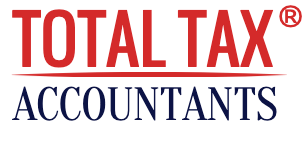Dividend allowance
The Dividend allowance is due to be cut from £5,000 to £2,000 from April 2018. What does this mean in practice, and how much will it cost you?
Why did the Chancellor target dividends again?
In his Spring 2017 Budget speech, the Chancellor said: “People should have choices about how they work, but those choices should not be driven primarily by differences in tax treatment.”
He said that people should pay broadly the same amount of tax regardless of whether they are employees, self-employed, or director/shareholders.
Using this as justification, he announced a hike in the levels of Class 4 National Insurance paid by the self-employed (although a u-turn took place shortly afterwards), and an increase in the way limited company dividends are taxed.
As many commentators have mentioned already… in his calculations, the Chancellor attempted to compare employee taxation with non-employee taxation, without taking into account the massive amount of perks and benefits employees receive, which are not available for free to non-employees.
Is this dividend allowance cut still going ahead?
Although this dividend allowance cut was dropped from the Finance Bill 2017 as a result of the General Election, it will go ahead as planned from April 2018, as it was re-introduced into a second Finance Bill (published on 8th September). The Bill received Royal Assent on 16th November 2017.
For the specific mention of the cut from £5,000 to £2,000, see Part 1, Section 8 of Finance (No. 2) Act 2017.
What is the ‘dividend allowance’?
The dividend allowance was only implemented in April 2016, as part of a radical shake-up in the way dividends are taxed.
Prior to this date, under the tax credit system, dividends were paid to shareholders net, and multiplied by 10/9 to produce the gross dividend upon which dividend tax was levied.
Since the new rules came into play in April 2016, dividends are subject to new tax rates (basic – 7.5%, higher – 32.5% and additional – 38.1%). This has placed a significant additional tax burden on limited company owners.
The one concession was the creation of a tax-free ‘dividend allowance’ applied to the first £5,000 of dividend income.
So, the first £5,000 of dividends are not taxed at all, but significantly, this sum still sits within the relevant tax band for overall taxation purposes.
How much will the dividend allowance reduction cost you?
From April 2018, the dividend allowance will be reduced from £5,000 to £2,000. How you are financially affected by the cut depends on which tax band the first £5,000 of dividends fall into.
If they fall into your basic rate band, you will be £225 worse off (7.5% basic rate dividend tax x £3,000). It will cost higher-rate taxpayers £975, and additional-rate taxpayers £1,143.
Of course, should the first £5,000 of dividends fall between two tax bands, the total tax hit will vary from the above figures.
If you receive a low salary, and don’t have significant extra income during the tax year, the final tax hit is likely to be £225, assuming the Chancellor isn’t tempted to meddle further with dividend taxation before the current implementation date.
How does the dividend allowance work in practice?
Here is an example of how the dividend allowance works for a limited company owner drawing down a £11,000 salary and £50,000 dividends during the 2017/18 tax year. The £11,500 salary takes up the entire 2017/18 personal allowance.
- The first £5,000 of dividends is included within the dividend allowance.
- The next £28,500 of dividends are taxed at 7.5% (basic rate) = £2,137.50.
- The remaining £16,500 dividends are taxed at 32.5% (higher rate) = £5,362.50.
- The total dividend tax liability is £7,500


